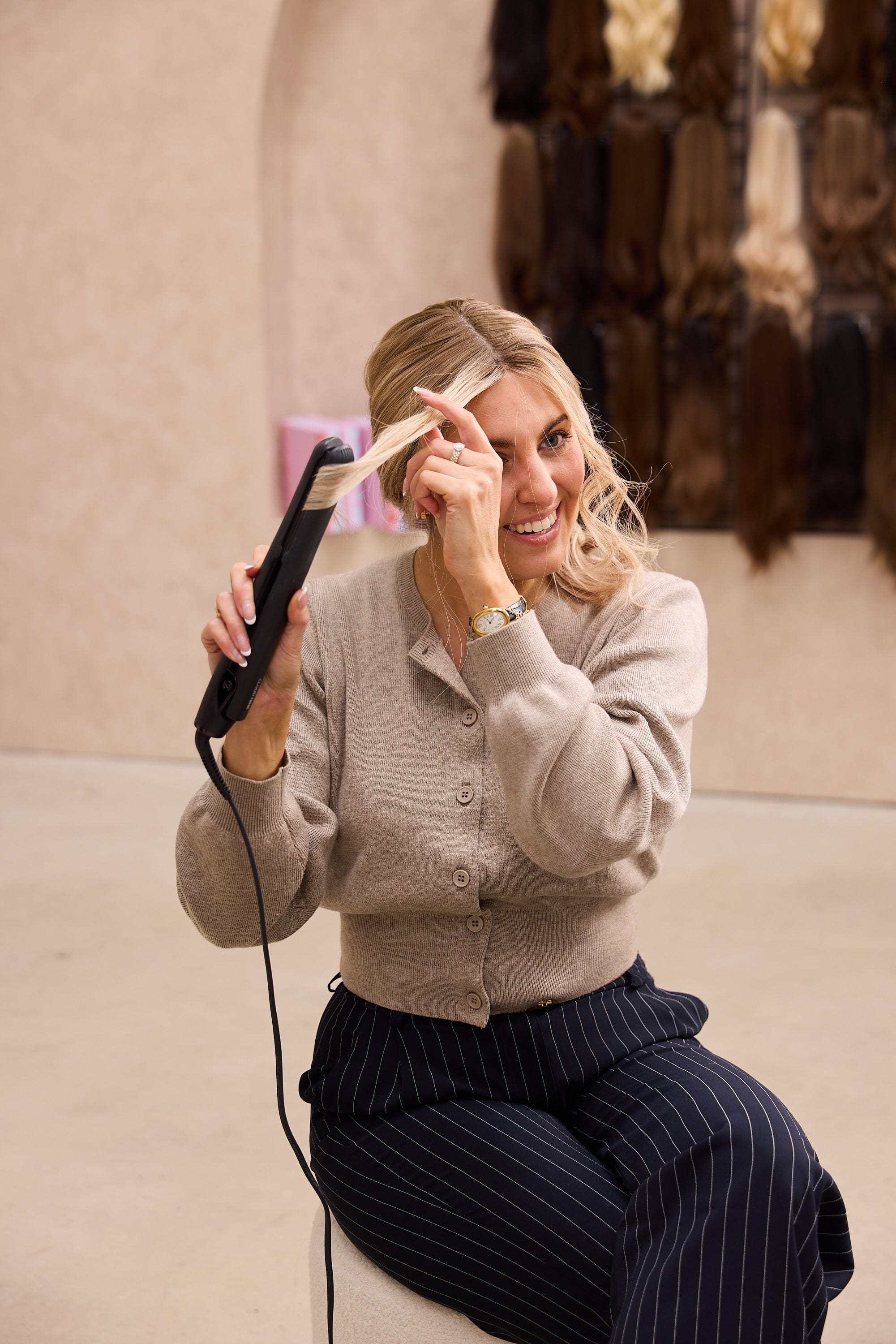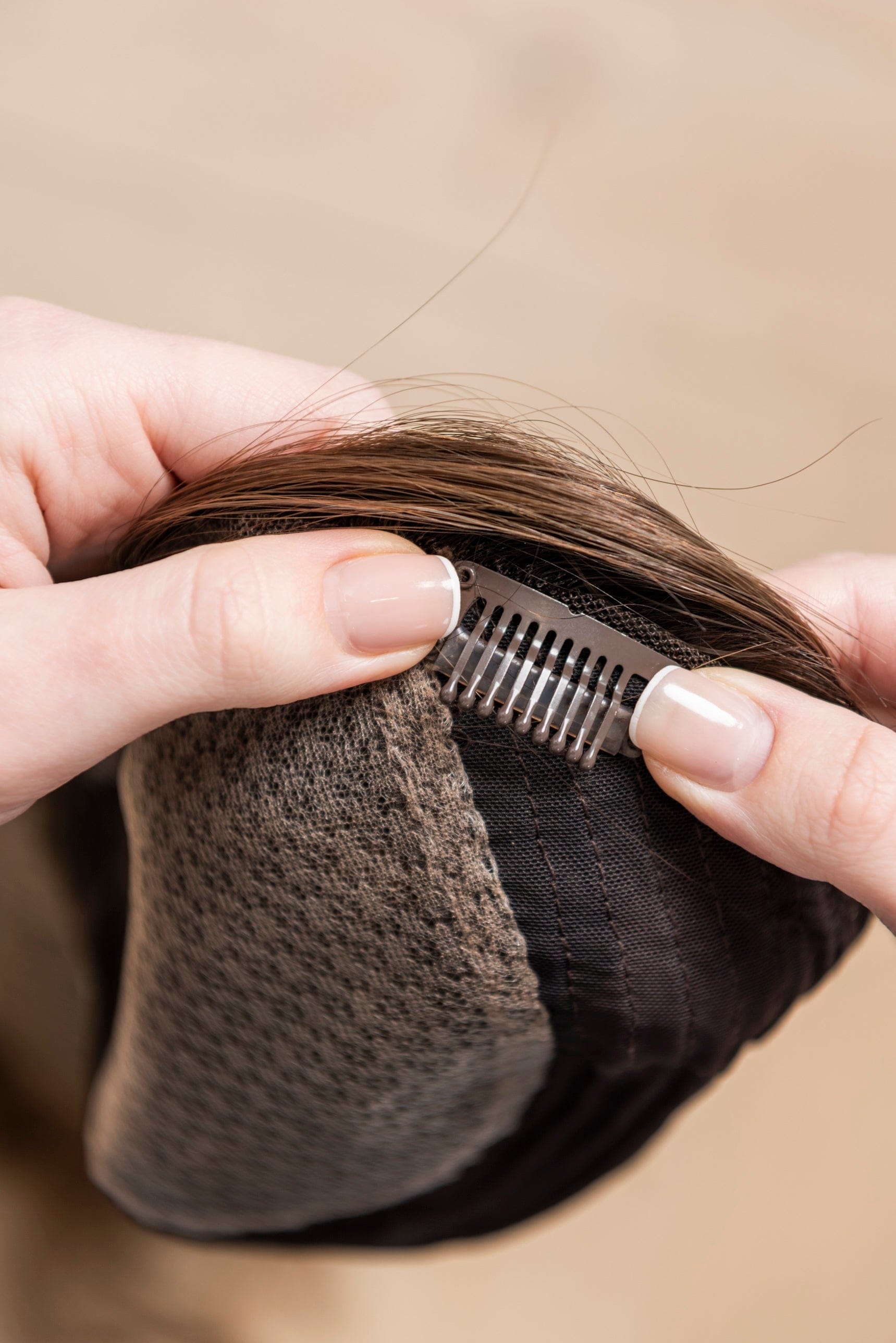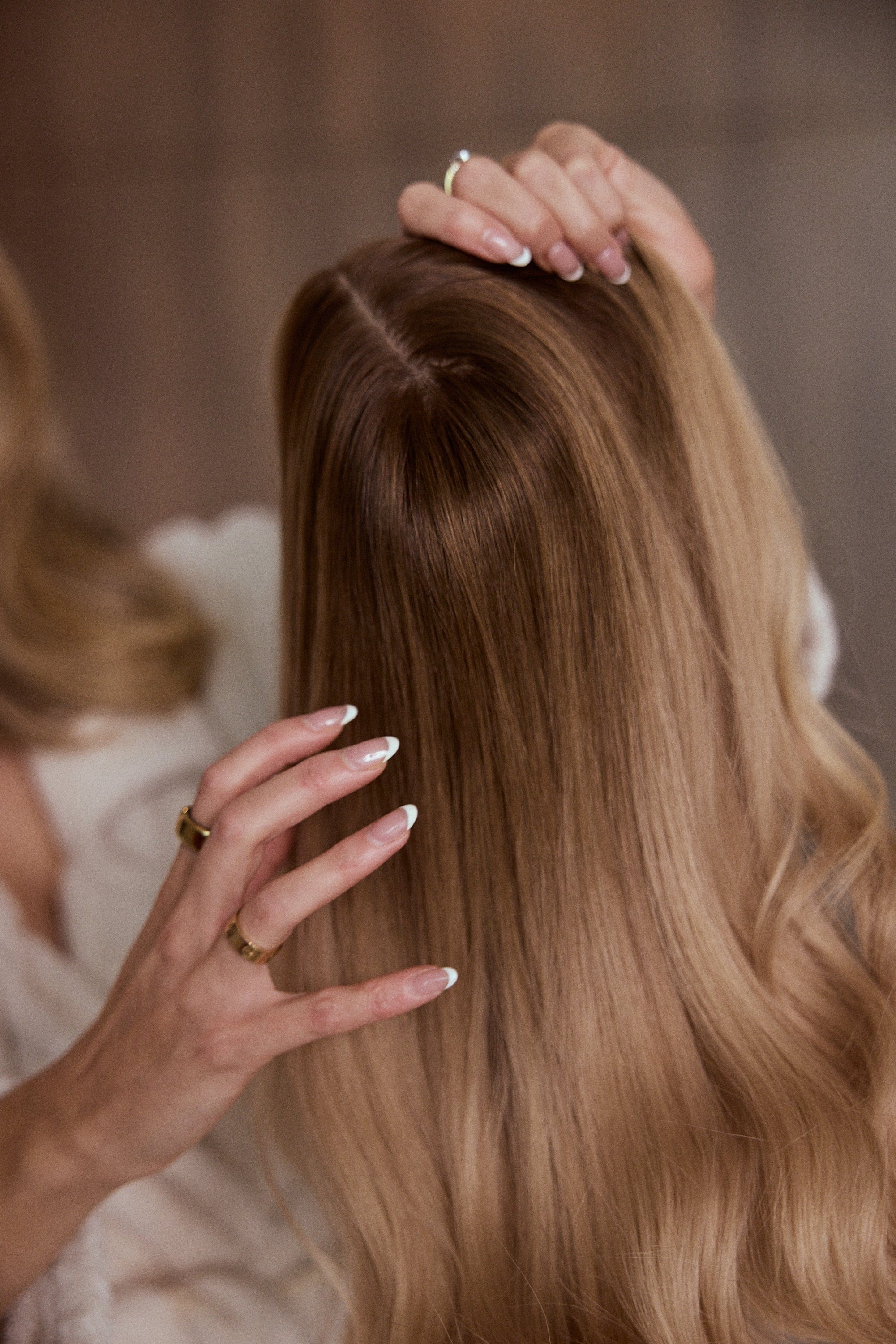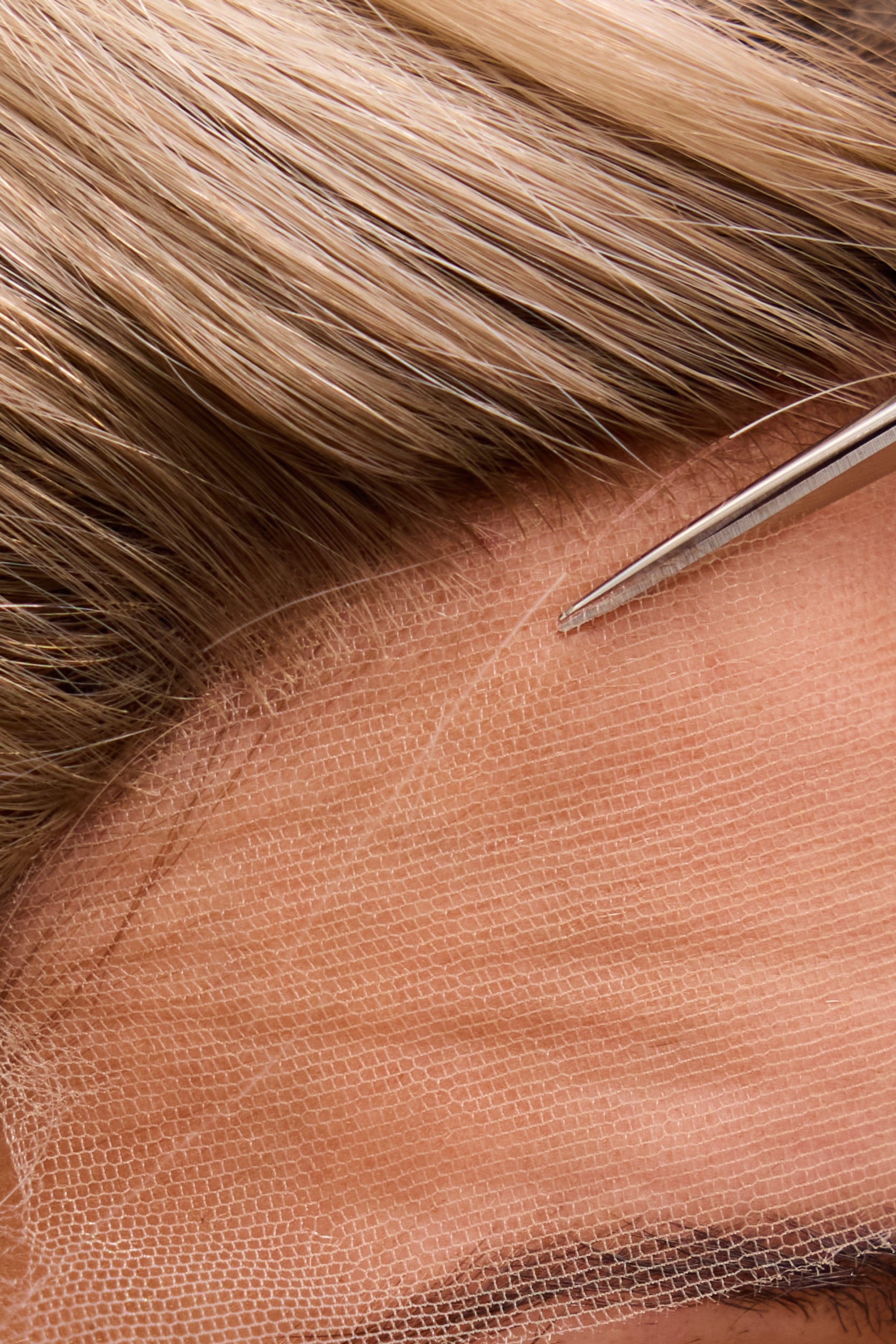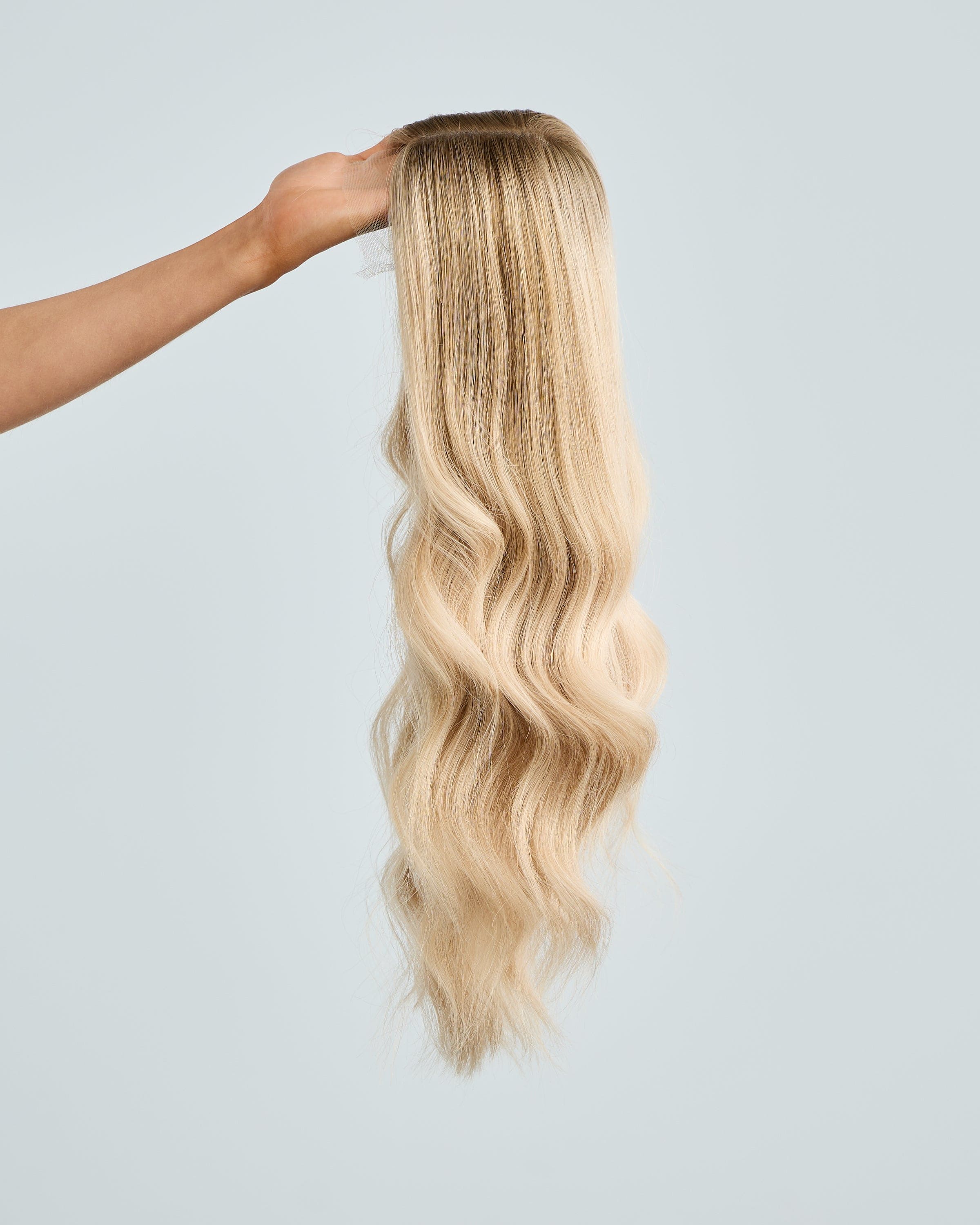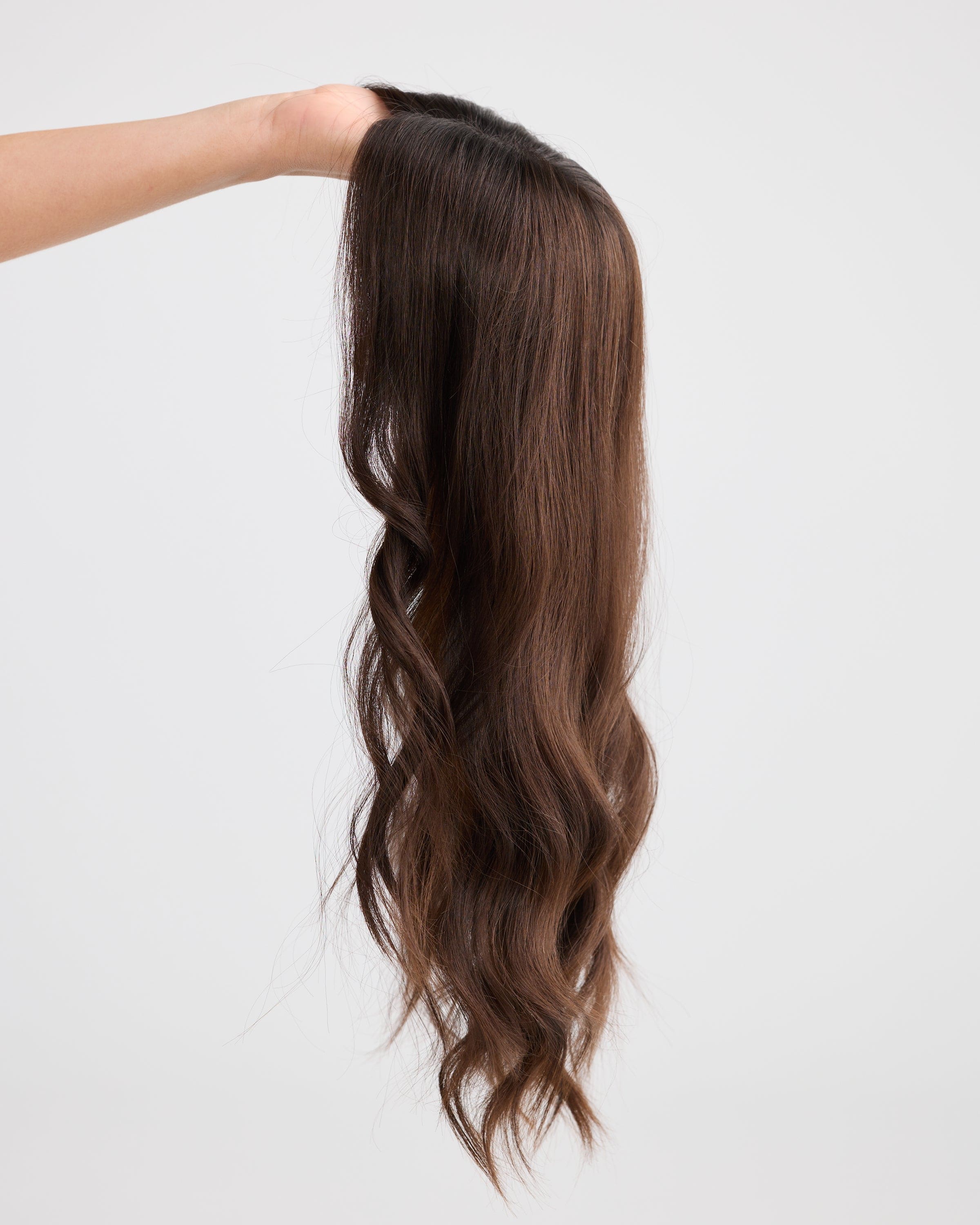If you've been on the hunt for a topper, wig or alternative hair piece you've definitely come across the term 'remy hair' in your searches. So, let's talk about it. What actually is remy hair? How is remy hair collected? And how does it affect you?
At Lusta, we only use Remy human hair.
In the alternative hair world, there's two different types of human hair; remy hair and non-remy hair. Remy hair means the hair cuticle is all running in the same direction. The cuticle is the outermost layer of the hair shaft. Think of them kinda like roofing tiles which protect the hair shaft. They're little 'scales' which overlap eachother. When the cuticles of each hair strand runs downwards, all in the same direction, this is called 'Remy' hair. This is the same as natural hair on your head, all the cuticles of your hair strands run downwards in the same direction. What does this mean for toppers or wigs? Well, Remy hair pieces will be much more natural-looking, keep tangle-free and look so much more sleeker.
Non-Remy hair means the cuticles of each hair strand are not going in the same direction. On some strands, the cuticle will run dowards, others it will run upwards. Each strand is sewn in randomly to the cap. Because of this, the hair will tangle and get knotty very easily. Think of it like teasing your hair. When you comb your hair backwards it pulls the cuticle the wrong way and creates knots and tangles. That's what happens when you brush Non-Remy hair. Non-Remy hair also doesn't usually look as natural as Remy hair.
Non-Remy hair is also often coated in silicone to 'disguise' the fact that it's not Remy. But after the first wash, all is revealed...

Why is Remy Hair So Expensive?
Remy hair is more costly than Non-Remy hair. This is mainly due to the collection process. Collecting Remy hair is super time consuming. Think about it. All the hair has to be cut, collected and kept in the same direction as it was when it was attached to the donor's head. This is usually done by cutting a full ponytail.
Non-Remy hair, on the other hand, is collected from a variety of places, including barber shop floors and...sometimes even drains (eeeek!). The hair is all swept up and sewn into the piece however it's found.
Let's dive a bit deeper into what makes remy human hair so expensive....
Method of Collection: As mentioned, Remy hair is often collected from a single donor, typically in the form of a ponytail. This ensures that the hair's natural direction remains consistent from root to tip. The meticulous collection process guarantees that the cuticles remain intact and face the same direction. This level of detail ensures a smoother, tangle-free experience for the wearer.
Quality and Longevity: Because of the careful collection and preservation of the cuticle alignment, Remy hair retains its natural shine and smooth texture for a more extended period compared to Non-Remy hair. This quality means that while you may pay more upfront, your investment will likely last longer and look better over time.
Ethical Considerations: Many reputable suppliers of Remy hair also ensure ethical sourcing, where the hair donors are compensated fairly for their contributions. Ethical sourcing can add to the cost but also provides peace of mind to those who prioritise responsible purchasing.
Processing and Handling: After collection, Remy hair often undergoes minimal processing to preserve its natural quality. Any treatments or dyes applied are done so cautiously to maintain the hair's integrity. This gentle handling, combined with the already meticulous collection process, can further add to the cost.
Supply and Demand: Given its superior quality, there's a high demand for genuine Remy hair in the market. But, due to its particular collection method, the supply is more limited than that of Non-Remy hair. This imbalance of high demand and limited supply can also elevate the price.
In contrast, Non-Remy hair might be more budget-friendly initially, but its varied sources and inconsistent direction can lead to challenges like tangling, matting, and reduced lifespan. Plus, the thought of where some of it might be sourced from (like drains) can be off-putting to many.
In the end, while Remy hair does come with a higher price tag, many find that the unparalleled quality, durability, and ethical considerations make it a worthy investment in the long run.
So, Does Remy Mean it's the Highest Quality?
Short answer, no. Yes, Remy hair is a better quality than Non-Remy hair, but this is just the basics. Within the world of Remy hair there's lots of different qualities of hair. Not all Remy hair is created equal.
The quality of Remy hair varies greatly depending on several factors, such as the source of the hair, the method of collection, and the processing techniques applied afterward.
For instance, Remy hair sourced from a single donor is typically of a higher quality than Remy hair sourced from multiple donors because the consistency in texture and color is maintained. Additionally, the treatment of the hair post-collection, such as if it's been dyed, bleached, or chemically processed, can also play a role in its overall quality.
At Lusta, we understand these nuances. Our dedication goes beyond just offering Remy hair; we are committed to sourcing only the crème de la crème of Remy human hair. This ensures that you receive not just the authenticity of Remy alignment but also the assurance that you're investing in the most superior texture, shine, and longevity. Our hair pieces are meticulously crafted with this premium hair, providing you with a natural, luxurious look and feel that stands the test of time.
Summary
If you're looking for the most natural-looking, tangle-free and long-lasting alternative hair piece, Remy is what you're looking for! Remy hair is the ONLY type of hair we use at Lusta, and our hair is ALWAYS the finest quality Remy human hair.
Got more questions? Drop them in the comments




